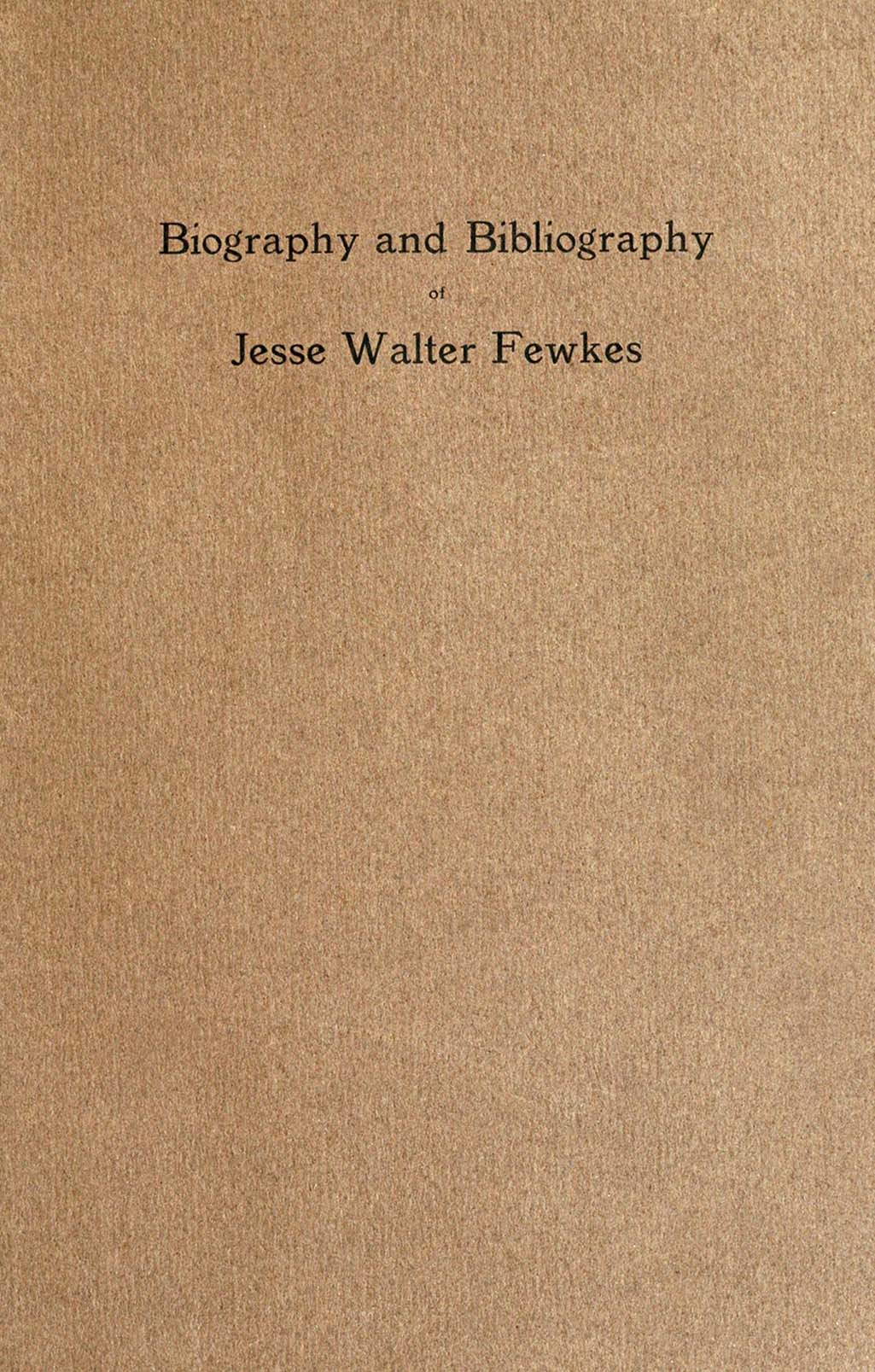

Biography and Bibliography
of
Jesse Walter Fewkes
Bibliography compiled by Mrs. Frances S. Nichols
BIOGRAPHY
Jesse Walter Fewkes, Chief of the Bureau of AmericanEthnology, is the son of Jesse and Susan Emeline (Jewett)Fewkes. He was born in Newton, Mass., November 14, 1850.His father and mother were born in Ipswich, Mass. On hismother’s side his American ancestry goes back to the close ofthe seventeenth century. He fitted for college in 1871 andentered without conditions. He was graduated from Harvardwith honor in Natural History in the class of 1875 and waselected in the society of Phi Beta Kappa. When a student inthe Agassiz School, at Penikese Island, Buzzards Bay, in1873, he came under the inspiring influence of the great naturalist,Louis Agassiz. After graduation he took a post-graduatecourse in Natural History, receiving the degrees ofA. M. and Ph. D. in zoology in 1877. From 1878 to 1880 hestudied zoology at Leipzig under Rudolph Leuckart, and spentseveral months in Naples, Italy, and Villa Franca, on the southcoast of France, under the Harris Fellowship.
In 1880 he was appointed assistant in the Museum of ComparativeZoology at Harvard, and for nine years was in chargeof lower invertebrata, and from 1884 to 1887 was Assistant inCharge, every summer, of Mr. Alexander Agassiz’s Newport,R. I., marine laboratory. In 1881 he made a trip with Mr.Agassiz to study marine life at Key West and Dry Tortugas,and in 1883 visited the Bermuda Islands for a similar purpose.
In the spring of 1887, as a guest of Mr. Augustus Hemenway,of Boston, he pursued scientific studies at Santa Barbara,Santa Cruz, and Monterey, Calif., and in the summer of 1888he studied in Paris and engaged in field work in marine zoologyin Prof. Lacaze Duthier’s zoological station at Roscoff, Brittany.
The visit to California marked a turning point in his life, asthrough the influence of Mrs. Mary Hemenway, of Boston,he became profoundly interested, in ethnological problems,especially of the Pueblos. In the summer of 1889 and 1890 he[2]visited Zuñi, New Mexico, and in the latter year employedthe phonograph in recording primitive music, a method nowuniversally adopted by ethnologists, and in 1891 used thesame instrument in recording Hopi songs. The records collectedon these trips were transcribed by Mr. B. I. Gilmanunder the titles “Zuñi Melodies” and “Hopi Songs” and publishedin the Journal of American Ethnology and Archæology,Vols. II and V, a scientific publication of which Dr. Fewkes wasfounder and editor.
During these pioneer experiments with the phonographamong the Zuñi and Hopi he became deeply interested inprimitive religion, and for four years was engaged in studiesof the ritual of the latter, in the employ of the late Mrs. MaryHemenway. In order better to appreciate Indian mythology
